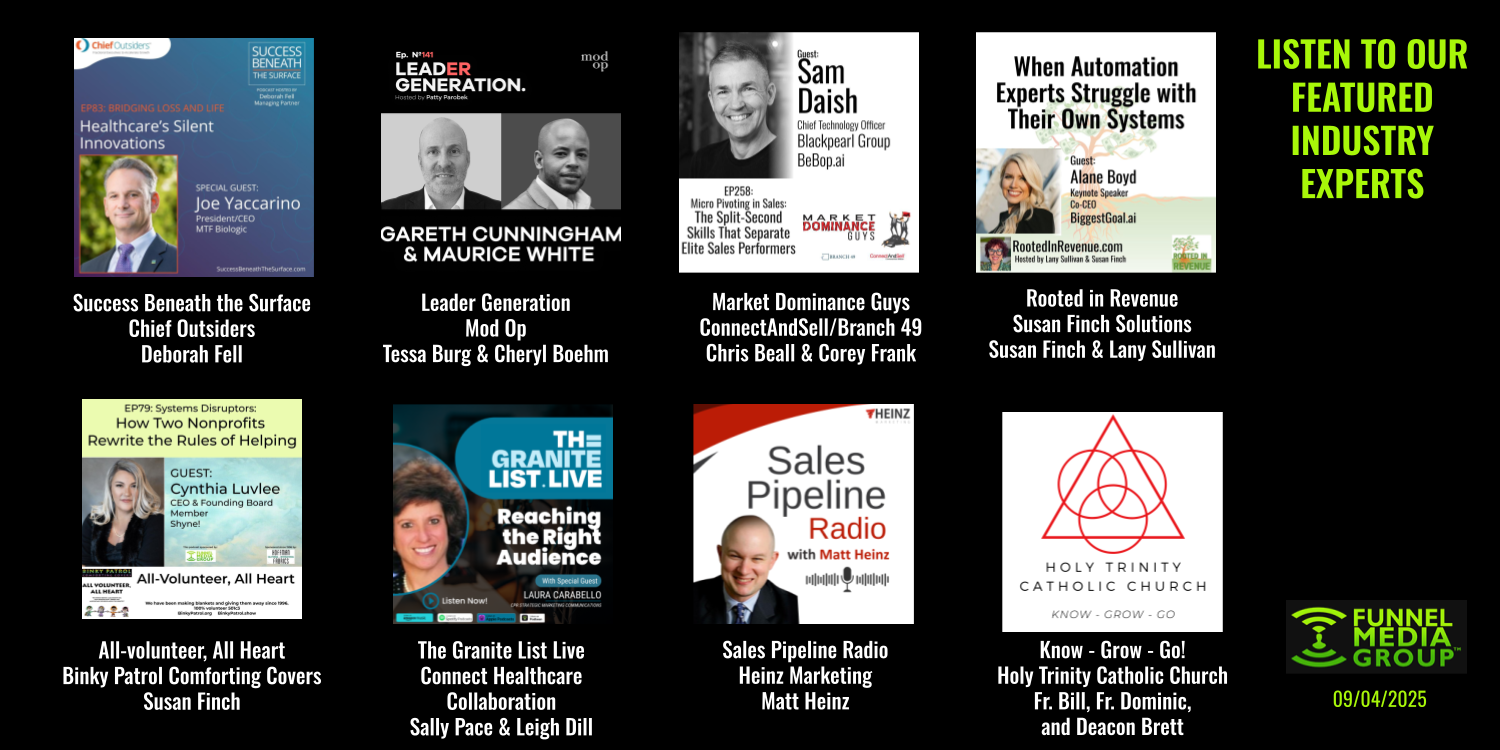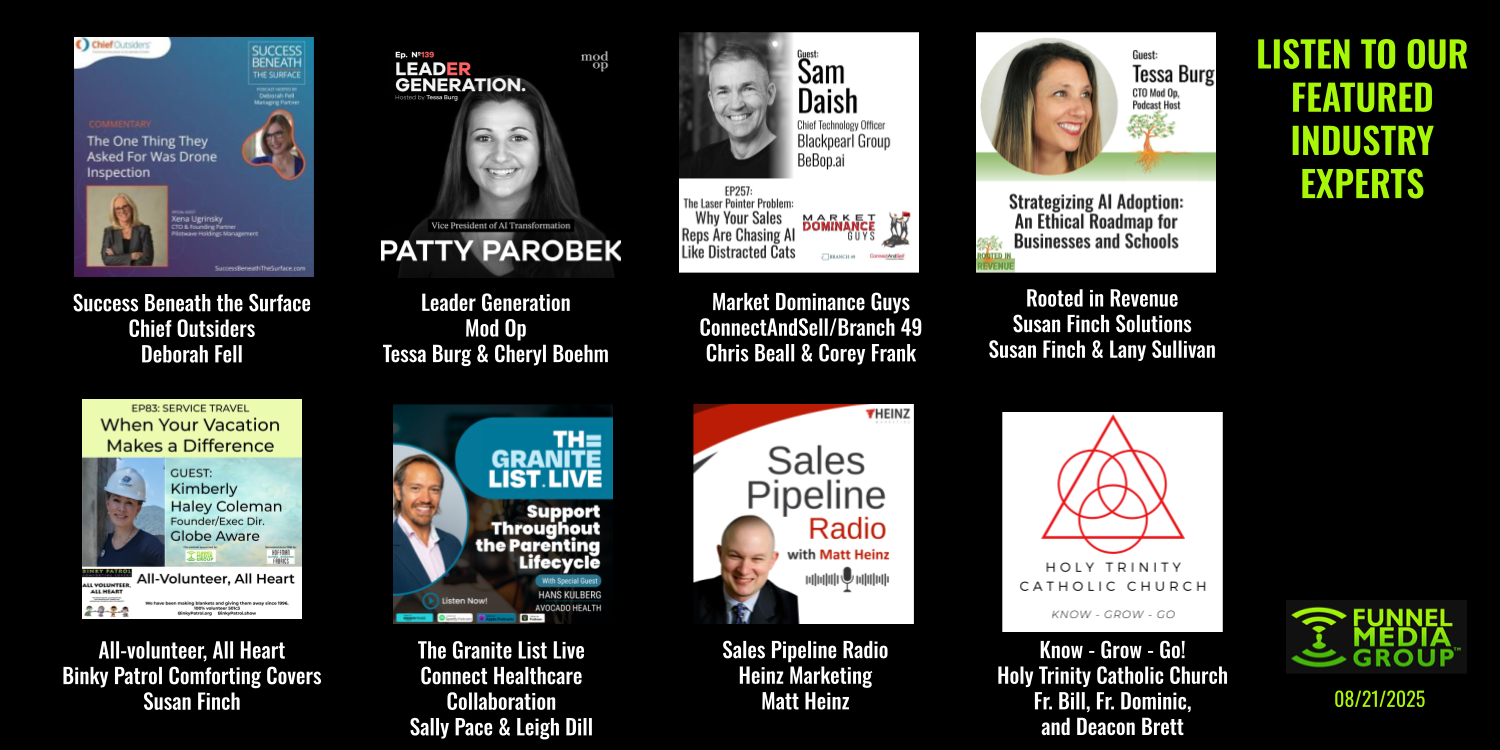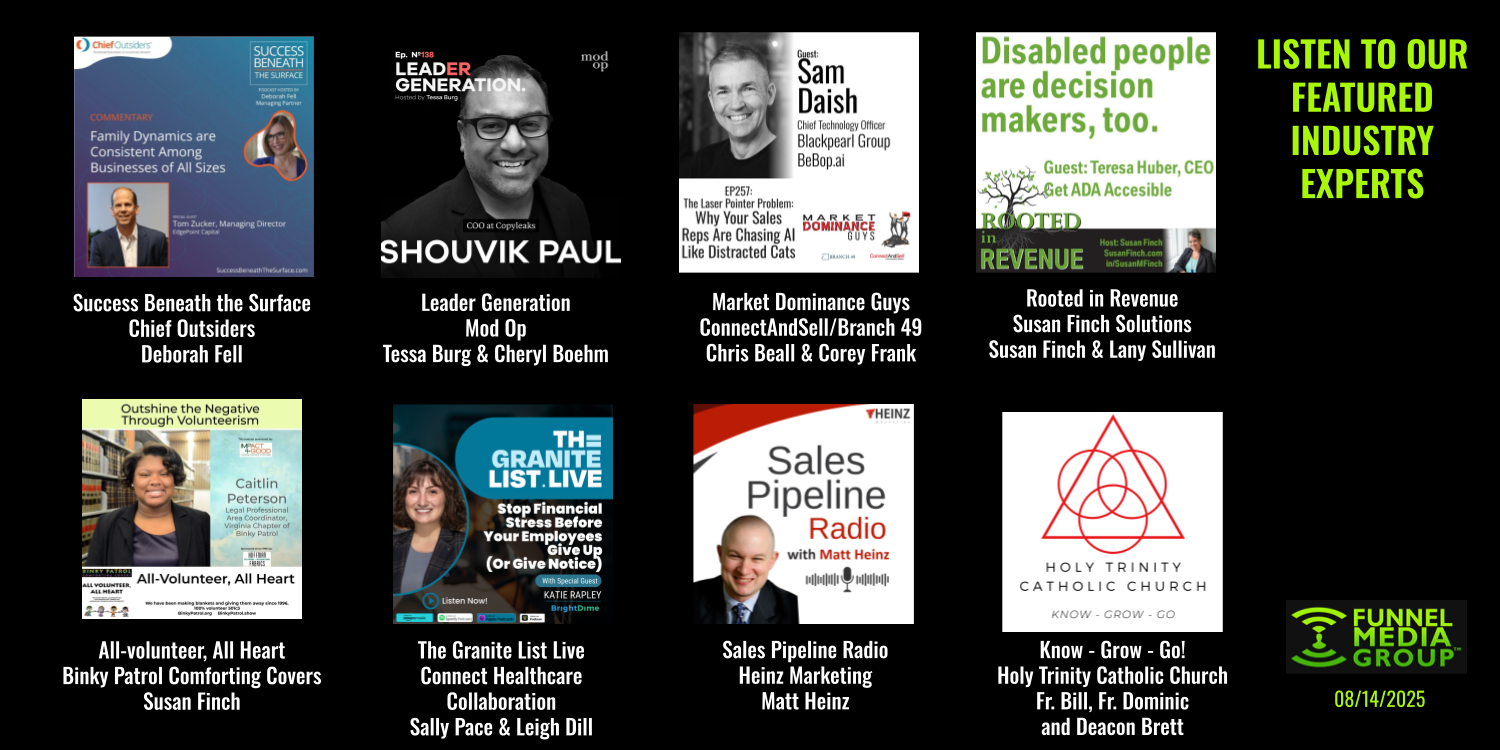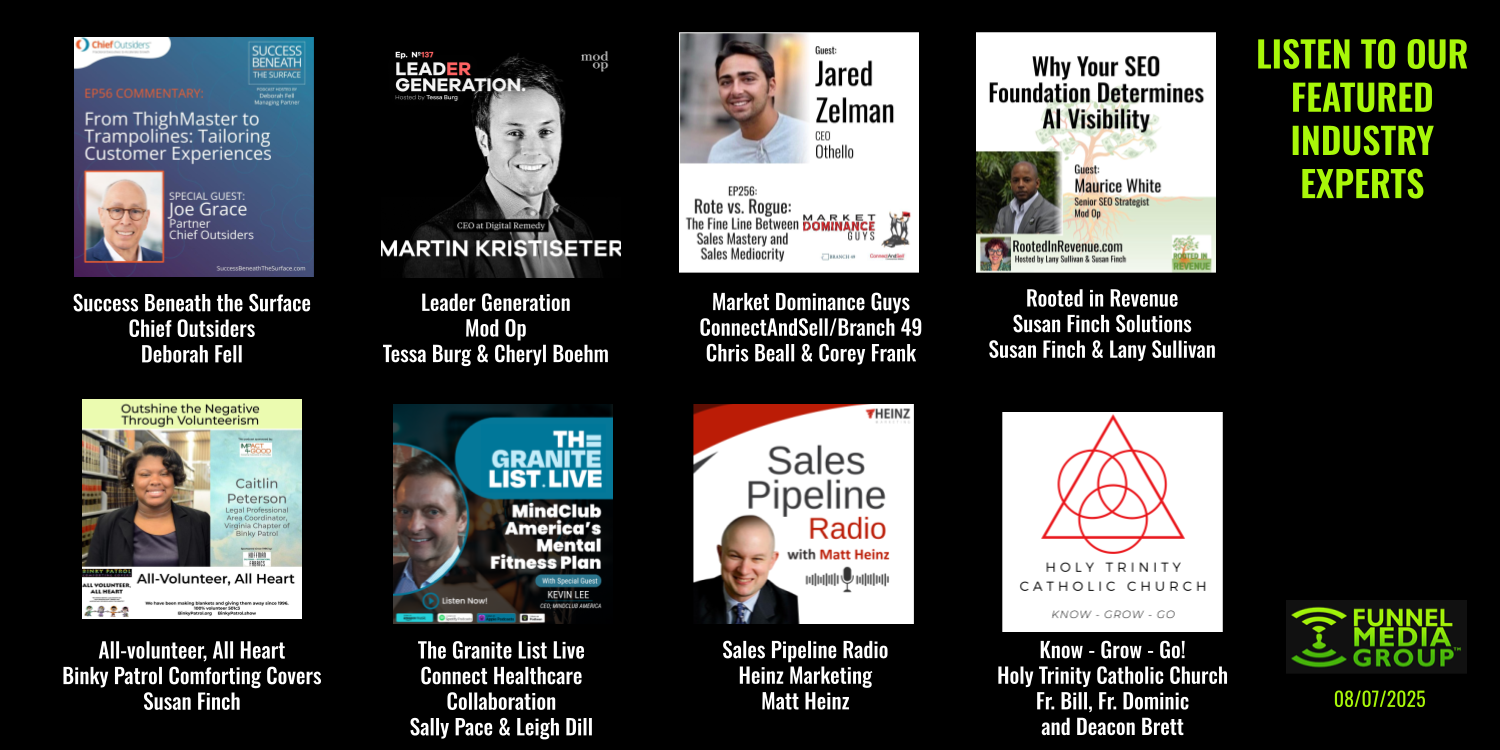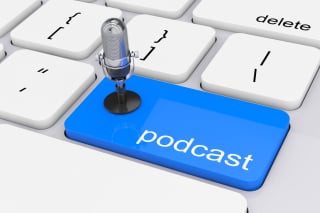 The popularity of podcasts as a communications medium has leaped beyond the garage podcaster (that thinking is so yesterday). Today podcasts are about comedy, health, society and culture, news and politics, and business. As of 2020, a podcasting research report from Musicoomph.com states that: [i]
The popularity of podcasts as a communications medium has leaped beyond the garage podcaster (that thinking is so yesterday). Today podcasts are about comedy, health, society and culture, news and politics, and business. As of 2020, a podcasting research report from Musicoomph.com states that: [i]
- there are 850,000 active podcasters.
- there are 30 million episodes.
- 70% of the US population are familiar with the term podcast.
- 51% of the US population have listened to a podcast.
- 22% of the US population listens to a weekly podcast.
An insightful annual research report from the Sagefrog Marketing Group, 23rd Edition, covers expected marketing spending in 2020 including social media sources, lead sources, and content marketing (you have to get this report if you are a CEO, CFO, CRO or CMO). Page 20 of the report shows podcasting, as a percentage of the tactics marketers expect to use in 2020, standing at 22%. Podcasting didn’t even register in 2019. [ii]
No one can deny that the use of business podcasts is accelerating – – they’ve become the new business-to-business (B2B) tactic for establishing thought leadership, beyond writing a book, and even beyond research (both of which take an enormous investment in time and money).
However, podcasting isn’t being used just for thought leadership and personal branding. It’s also being used as:
- a communications vehicle for engaging and communicating with employees (podcasts can be private for employees).
- a sales training tool that can be listened to multiple times by salespeople.
- a product introduction tool for customers and prospects.
- a product which can be charged for, either as a subscription or for single episodes.
- an educational tool for students from high school to graduate school.
- a partial or full replacement for webinars, as podcasting has proven to be more far reaching and less costly to produce.
Podcast hosts vary from a single individual to rotating hosts for different subjects. Hosts are often a CEO, CMO, CRO, authors, consultants, industry experts, and even hired personalities. Native (sponsored or branded) commercials for the programs are common.
Listenership numbers vary based on the audience. For private programs for a company it could be 15-50 employees, or thousands. Public programs reaching out to customers and prospects can be heard by 500-10,000 listeners per month, or considerably more.
Podcasts, as many marketers are realizing, are evergreen in content and build listenership for months and years as each episode is found. But it isn’t just the recorded content that podcast producers find so useful; it’s the 14-20 ways that the podcast content can be used and reused that is so attractive. A typical 30-minute podcast has 3,500 to 5,000 words per episode; the content can be quoted and extracted, and used as:[iii]
- content for lead nurture programs.
- content for collateral.
- quotes and stories for use in books (e-books and hardcopy books).
- part of a podcast; extracted and republished. This is from Asher Sales Strategies’ Asher Sales Sense Podcast: How to Hire a Natural Born Salesperson – Karen Caplan.
- blog content. This is a blog post on Heinz Marketing and the basis of a podcast: Sales Pipeline Radio, Episode 197 Q & A with Steve Gordon @steve_gordon.
- newsletter content.
- case study content.
- social media content. See this example from Darryl Praill of INSIDE Inside Sales in LinkedIn.
- white papers. See How Thought Leadership Can Be Shaped by Streaming Internet Radio.
- YouTube examples: You Can’t Execute Anything From a PPT Deck – Josh Baez and Matt Heinz Podcast.
- guest sites content.
- employee communications. See Table Fries by Jeanne Hopkins from LOLA.
- current customer testimonials.
- books reviews and instructional material. See West Virginia University’s Reed College of Media program WVU Marketing Communications Today.
- brand building for companies and individuals, from INSIDE Inside Sales with Darryl Praill of VanillaSoft Hunting the Perfect Prospect.
Podcasts can be used as a series (as in product introductions and sales training with a limited number of episodes) or once a month, bi-weekly, or weekly. A podcast can originate as an internet or terrestrial radio program, or simply as a recorded podcast posted to the host’s site.
You May Also Like:
When the Marketing Machine Craves Authentic Content: Use Podcasts
Tips for Starting a Podcast
Maybe Your Career Needs A Personal Brand
In closing, as B2B companies seek new ways to reach end-users of their products, podcasting has become the media of choice for multi-use, authentic communications that can be the inexpensive but far-reaching option with evergreen content. To understand more about how podcasts are produced, visit Funnel Media Group.com.
[i] https://musicoomph.com/podcast-statistics/
[ii] https://www.sagefrog.com/resources/2020-marketing-mix-report/
[iii] Podcasting: The Secret for Creating Meaningful Content


